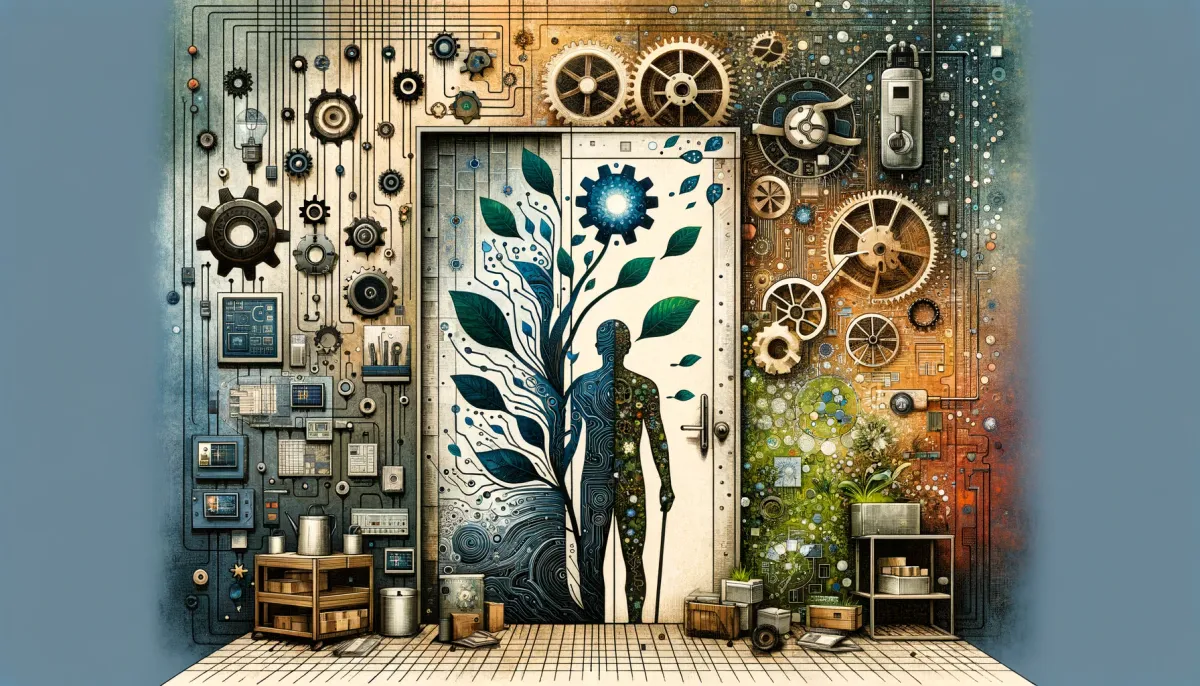Embracing Change: Why Staying Unsettled Spurs Growth
Discover the importance of staying adaptable and innovative in business. Learn from examples in manufacturing to tech and how generative AI is reshaping work.

Humans, by nature, are pattern-seeking creatures. We're wired to adapt to the systems we're part of, whether in a family, office or even a circle of friends. This adaptation often involves emulating behaviors and language, quickly settling into the norms of these groups. However, this natural tendency to acclimate can sometimes be a double-edged sword, especially in business environments.
Take, for example, my experience in a door manufacturing factory. This factory was a blend of manual labor and machine-assisted tasks. Over time, new machines were introduced, replacing older technologies. Each introduction required workers to reacclimate, retrain, and adapt to these changes. , competitive. This need for constant review and adaptation isn't just confined to manufacturing. It's equally relevant in creative industries and e-commerce platforms. If this door manufacturing company settled on its current conditions, then it would continue to enjoy its immediate success while also accepting the potential future risks that would compromise the organization. Take, for instance, the challenge of increasing production while maintaining quality. If a competitor were turning up product weeks faster than these competitive conditions, the absence of a strategic advantage would impact the organization's resiliency.
While the intellectual workforces face many challenges with modifying human behavior
It is one thing to skill up to three to five professionals who work a single machine, but it is another when a disrupting software trend enters the market. You are now faced with reorienting how people organize themselves in the world once more. Still, we are redesigning how we organize our thoughts and habits around a different way of working. In technology, we see this quite frequently; as the web continued to advance, so did the practices that built it. People seeking top jobs in the industry were faced with constantly reorienting themselves on how they organize code and build applications using the "latest and greatest" approaches. Some of what we saw in web development required people to almost completely relearn what it took to produce products in the modern era. What we consider the cloud today is another example of how people have been challenged to rethink how they do their work completely. What is our role with so many complex services being managed for us?
Today, one of the most talked-about innovations is generative AI. It's a buzzword in almost every industry, with organizations eagerly exploring how to integrate it into their operations. But here lies the challenge and opportunity. Some organizations may face novel approaches to their work and new meanings to how people spend their time there. The idea that we can "bolt-on" transformational concepts is a gateway to learning and identifying value early on. This strategy can inadvertently also become the blinders that block us from noticing the bigger opportunities. To be specific
Are we embracing the transformation or are we trying to do what we had done in the past in this new way?
Our brains are exceptional at recognizing and adopting patterns; this can sometimes lead to a comfort trap. When we get too comfortable with these patterns, we risk losing sight of our objectives. It becomes about the routine, not the goal.
The key is to notice settling, find ways to expose ourselves to different ways of thinking and keep challenging the status quo. Question the efficacy of our processes and be open to change. Look for opportunities to innovate and adapt. This approach doesn't just apply to adopting new technologies like AI but extends to every aspect of our work and life.
Thought starters that invite novel thought
- Consider your moonshot projects. Don't have one? - find one.
- Attend workshops or seminars, explore spaces adjacent to yours, and talk to people in 1:1's from other organizations but similar roles.
- Have a play, take something new, and invite as many people as possible to observe what emerges. Stripe used a process where they asked 100 employees to stop what they were doing and explore how they might apply ChatGPT to their products and services. This approach invited many minds into the creative process, increasing the likeliness of expanded thinking. This led to safe-to-fail experiments that led to their initial short-term and long-term investments.
- If you are a practitioner of Cynefin then I would invite you to explore the Complex domain and seek exaptation. If your world feels orderly, this might be a sign to go out and explore.
In summary, don't let the comfort of familiarity and the sense of ease rush once we feel like the "problem has been solved." Find ways to remain curious, adaptable, and embrace change. Please keep an open mind to what a change might look like; sometimes, we know what to do but lack the courage or clarity to do so.
I wish you great courage in your present.
